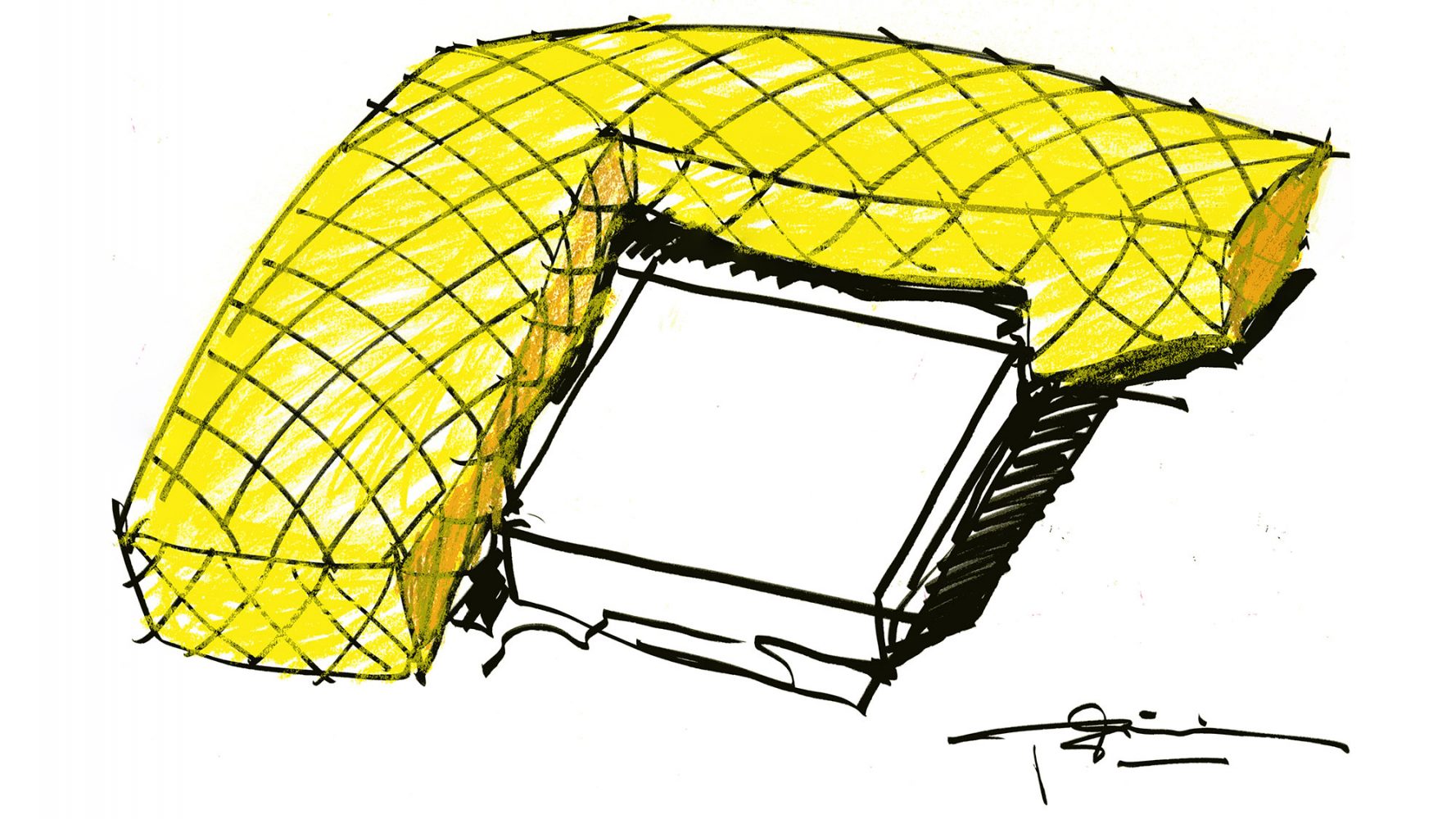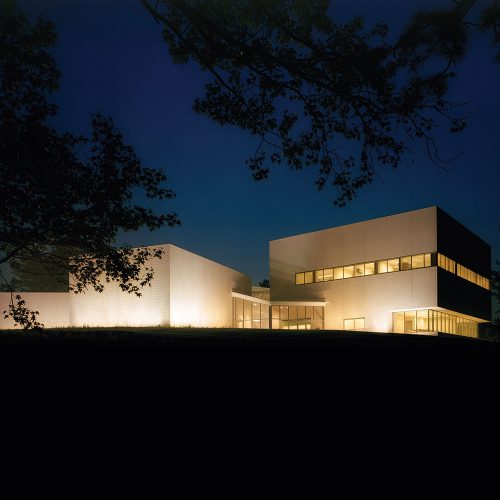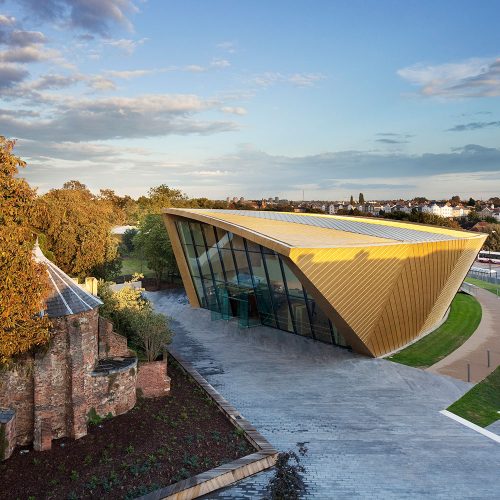Brooklyn Children’s Museum
The glittering envelope of yellow ceramic tiles is compelling and attractive to children, creates a public landmark in its residential neighborhood, and contributes to a sustainability strategy that made it New York City’s first LEED Silver-certified museum.
Seeking expanded capacity to serve a growing audience of children and families, the Brooklyn Children’s Museum wanted a new public presence that would contribute to the vitality of the surrounding community. Rafael Viñoly Architects responded by creating a structure that differs from its context, in color as well as physical form, yet remains welcoming and deferential to the museum’s existing built environment. The architecture of the new building is compelling and inviting to children, its glittering envelope of yellow ceramic tiles creating a landmark attraction in the primarily low-rise neighborhood of Crown Heights.
The implemented design completely rethinks the existing 1977 museum, a low volume set back from the street edge in a berm, both expanding and reconfiguring it. In keeping with the goal of expanding the museum’s presence in the streetscape, the envelope is a sculptural form that converts the simple L-shaped plan into a singular, dynamic mass. Two stories of new construction add a library, exhibition galleries, café, and classrooms. The new building’s expanded plan and second-floor galleries are integrated with the existing structure through open staircases and vertical circulation cores. The design provides access to the existing rooftop terrace and outdoor theater, linking these spaces directly to a second-floor Kids’ Café. Throughout the building, specially designed features ensure that the architecture remains child-accessible: for instance, additional wooden handrails are mounted at a low level, and porthole windows punctuate the building envelope at a variety of heights and angles.
To avoid the clichés associated with the primary colors of yellow, red, and blue, the interiors embrace an analogous palette of yellow, vermillion-orange, and green, replacing the more conventional children’s colors (blue, red) with somewhat atypical tones (orange, green). The result is vibrant and eye-catching: orange and green walls support a yellow soffit in the main entrance lobby, electrifying yellow signage is accented with orange text and a streak of yellow blazes across the lobby ceiling, piquing interest and beckoning visitors into the exhibit galleries.
The Brooklyn Children’s Museum is New York City’s first LEED-certified museum—it achieved LEED Silver in 2010—and the first to tap geothermal wells for heating and cooling purposes. Wherever possible, construction utilized rapidly renewable and recycled materials and incorporated high-performance/sustainable features. Photovoltaic cells on exterior walls convert solar energy directly into electrical power, and energy-saving sensors control the interior lighting and ventilation systems.























